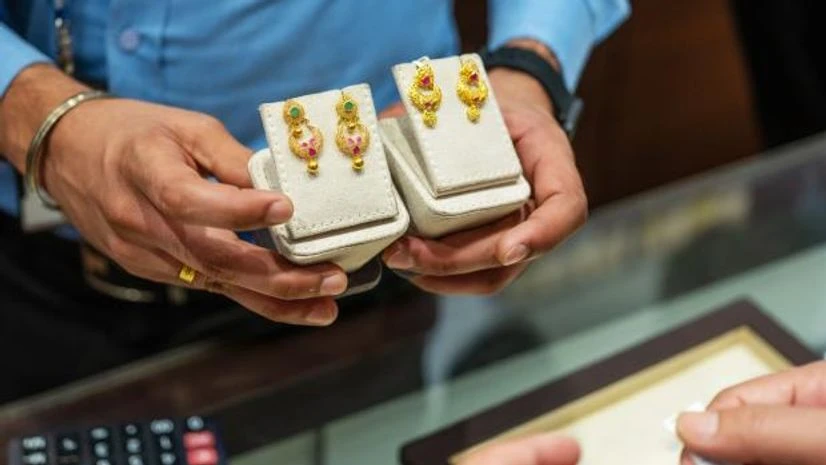India's gold jewellery demand is likely to grow steadily at 11 per cent during the current financial year due to strong retail performance last year, according to a report.
Within the jewellery retail industry, revenues of organised retailers are likely to grow at a higher pace of 14 per cent, backed by their aggressive store expansion plans and a gradual shift from the unorganised segment towards the organised one, Icra Ratings said in a report.
Demand during the current Akshaya Tritiya season is expected to be strong, leading to a healthy demand growth of around 45 per cent Y-o-Y in the first quarter of FY23. Growth for FY23 is expected at 11 per cent for the industry, despite a high base witnessed in FY22, driven by the anticipated steady wedding and festive purchases during the current fiscal, given Indian consumer's strong cultural affinity towards gold," Icra Senior Vice President and Group Head Jayanta Roy said.
Interestingly, at the forecasted level, gold jewellery demand in FY23 would be almost 40 per cent higher than the levels seen in FY20, he added.
The Icra report further stated that the jewellery retail sector is estimated to have grown at a robust 26 per cent in FY22, driven by the strong demand recovery witnessed post the second wave of COVID-19 in the first quarter of 2021-22.
This was despite a sharp increase in gold prices, which resulted in some postponement of purchases for weddings and other occasions towards the end of the fiscal, the report observed.
More From This Section
Consumption in FY22 was spurred by a pent-up demand in the second quarter and healthy festive and wedding demand driving record sales in the third quarter.
Further, gold jewellery demand in the fourth quarter too was better than expected, with a limited impact of the third wave on store operations.
For FY23, revenues are expected to grow at a steady pace of 14 per cent driven primarily by anticipated store expansions, it said.
Post the healthy levels seen in FY20 and FY21 on the back of inventory gains, operating profitability in FY22 are estimated to have witnessed some moderation because of lower contribution levels and an increase in operating costs.
Nevertheless, the report estimated that the margins of organised retailers were higher than the average levels seen over the last decade, and are expected to stabilise at around 7-7.5 per cent over the medium term. With jewellery demand witnessing a healthy growth, organised players had re-initiated their expansion plans in FY22.
The pace of addition may gain further momentum in the coming quarters, with the total store count likely to increase by more than 10 per cent in the next 12 months.
Revenue growth at around 14 per cent for the large organised players is likely to outpace the industry growth in FY23, backed by an expected increase in store count by more than 10 per cent in the next 12 months and the continuing shift towards organised players witnessed in the recent past," Icra Vice President and Co-Group Head Kaushik Das said.
Supported by growing share of studded jewellery and better operating leverage, the operating margins for organised players are likely to stabilise at around 7.5 per cent in FY23, he said.
"While the retailers' debt levels have increased in the recent quarters to fund store expansions and associated inventory requirements, steady growth in earnings would support the coverage metrics and the capitalisation levels, which are likely to remain at comfortable levels, he added.
(Only the headline and picture of this report may have been reworked by the Business Standard staff; the rest of the content is auto-generated from a syndicated feed.)

)
